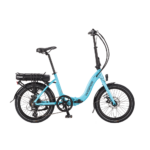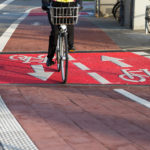I just went through a period of knee problems. Nothing serious but enough to make me stop and think. So, instead of just setting things up by eye I did a lot of reading and finally landed up with my saddle at least 1 1/2" higher and pushed as far back as the rails would allow. There are various articles on the web with some slightly different ideas but basically they indicate similar things.
One of the problems is that most people feel secure if they can easily put a foot on the floor when they stop but in fact sheldon brown remarks that if you can easily get a foot on the ground when you stop then your saddle is too low. also the position of the saddle (backwards or forwards) is another major point. You are supposed to look at the pedal spindle and have the front of your knee over it( some positions vary BTW)when the crank arms are horizontal.
Anyway, to cut a long story short I set my bike up yesterday in a more critical way and then went for a 12 mile ride over varying terrain, return home and when I got off of the bike my legs and knees really did feel better. The icing on the cake was this morning, climbing out of the pit and attempting the walk down stairs when still half asleep and creeking was just so much better and well worth the time spent trialing and erroring yesterday.
Just thought I`d mention it and no doubt many on here are already avid adopters of the correct position but people like me just returning to cycling after many years of lay off might just need a reminder.
BTW I had cause to visit my doctor yesterday (nothing related) and got into a discussion about cycling and health and he stated that in his opinion cycling for people of my age (65) is in his view probably the best form of general exercise as long as you don`t go over the top and when I mentioned that I ride an electrically assisted bike he said that that was exactly the right way to go. Less wear and tear on the legs and knees because of low impact he said.
One of the problems is that most people feel secure if they can easily put a foot on the floor when they stop but in fact sheldon brown remarks that if you can easily get a foot on the ground when you stop then your saddle is too low. also the position of the saddle (backwards or forwards) is another major point. You are supposed to look at the pedal spindle and have the front of your knee over it( some positions vary BTW)when the crank arms are horizontal.
Anyway, to cut a long story short I set my bike up yesterday in a more critical way and then went for a 12 mile ride over varying terrain, return home and when I got off of the bike my legs and knees really did feel better. The icing on the cake was this morning, climbing out of the pit and attempting the walk down stairs when still half asleep and creeking was just so much better and well worth the time spent trialing and erroring yesterday.
Just thought I`d mention it and no doubt many on here are already avid adopters of the correct position but people like me just returning to cycling after many years of lay off might just need a reminder.
BTW I had cause to visit my doctor yesterday (nothing related) and got into a discussion about cycling and health and he stated that in his opinion cycling for people of my age (65) is in his view probably the best form of general exercise as long as you don`t go over the top and when I mentioned that I ride an electrically assisted bike he said that that was exactly the right way to go. Less wear and tear on the legs and knees because of low impact he said.






